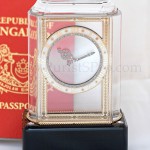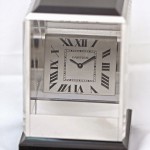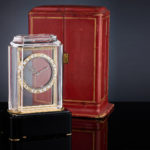Fabled “Lost” Cartier ‘Pendule Magnétique’ Water Clock Rediscovered
Four extraordinary Cartier clocks resurface.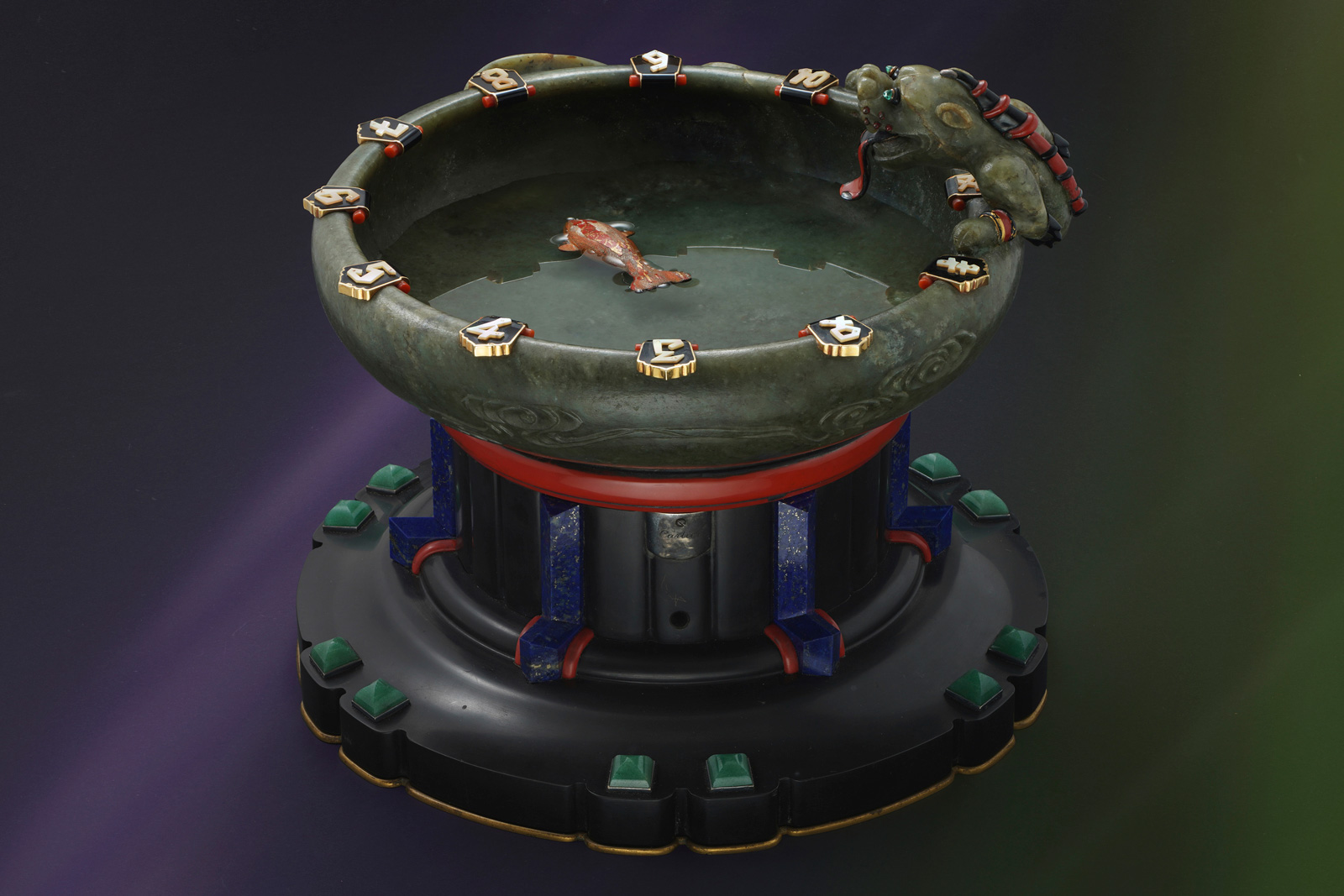
Although Cartier watches are now enjoying a streak of popularity, thanks in part to social media, the jeweller’s greatest timekeepers are arguably not wristwatches but clocks, namely the lavish and inventive clocks made in the first half of the 20th century that rank amongst the most impressive clocks ever made. Not only were most carefully designed and ornately decorated, many feature unique, “mysterious” time display mechanisms.
A quartet of such clocks long hidden in a discreet collection, has just emerged at Phillips and will soon go under the hammer. All four are Chinese-themed Art Deco creations typical of Cartier’s work of the period, and include an example of the famous mystery clock, specially a single-axle version inlaid with turquoise. But the highlight is a long-lost pendule de table magnétique, or magnet clock, sometimes also known as a turtle- or water clock. The most elaborate water clock ever made by Cartier, this example is a large jade bowl containing a carp floating on water that serves as the hour hand.
Made in 1929 by Cartier Paris and sold by its New York branch, this water clock was lost for decades and known only from drawings in Cartier’s archives. It finally reemerged at Christie’s in 1990, where it was sold to the current owner. The clock then remained inaccessible in the owner’s collection, although it was mentioned in several Cartier books, including the well-known tomes by Francois Chaille and Franco Cologni, and Hans Nadelhoffer, respectively.
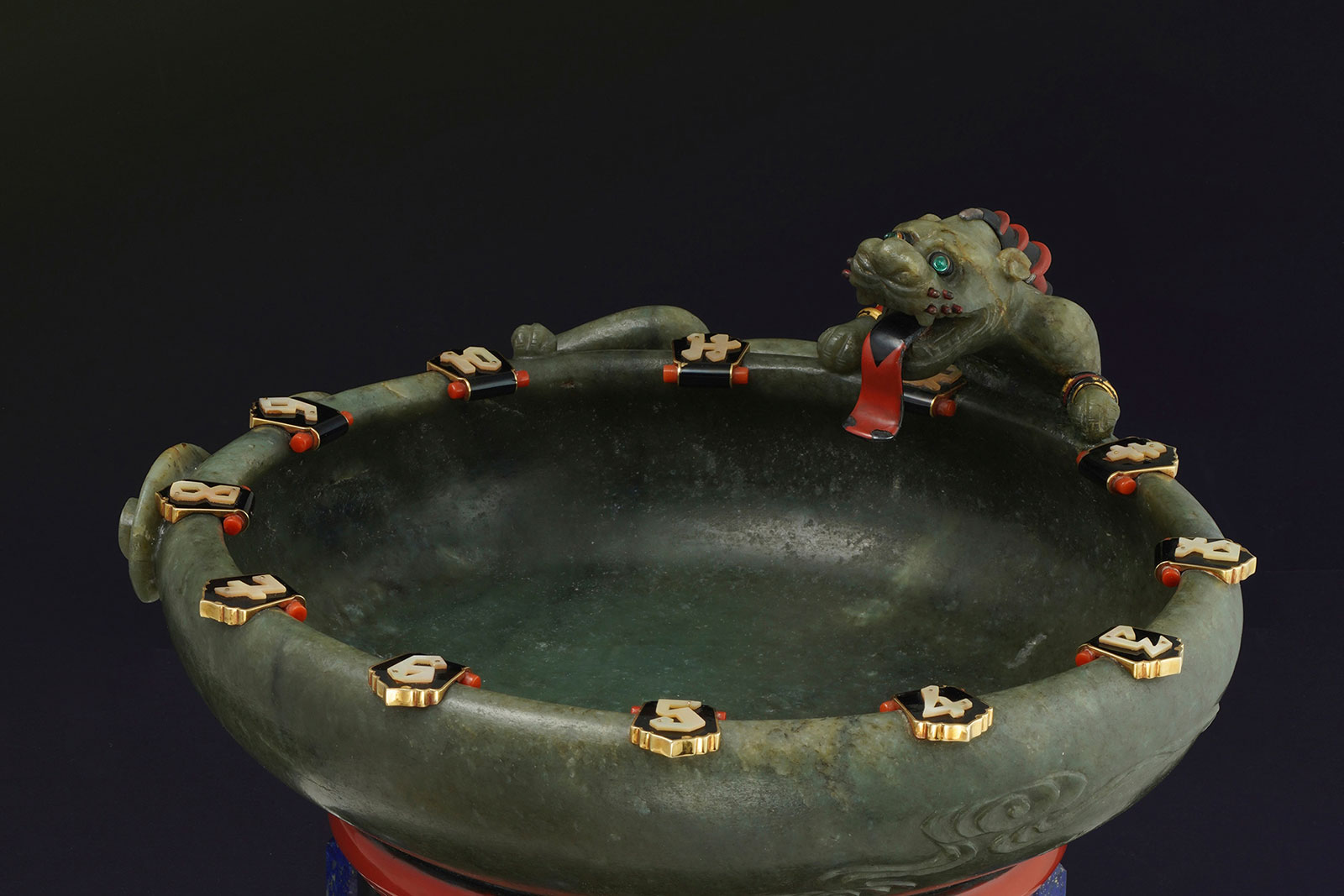
Described those books as the most precious of only three water clocks made during that period, this large table clock is centred on a jade basin that dates from the 17th century. Like many Cartier jewels and objects of the 1920s and 1930s, this repurposed an antique Chinese object to create something new in the then-popular Chinoiserie style. The bowl was dressed up by Cartier with additional decoration, including coral and black enamel plates for the hour numerals and emerald eyes for the qilin on the side.
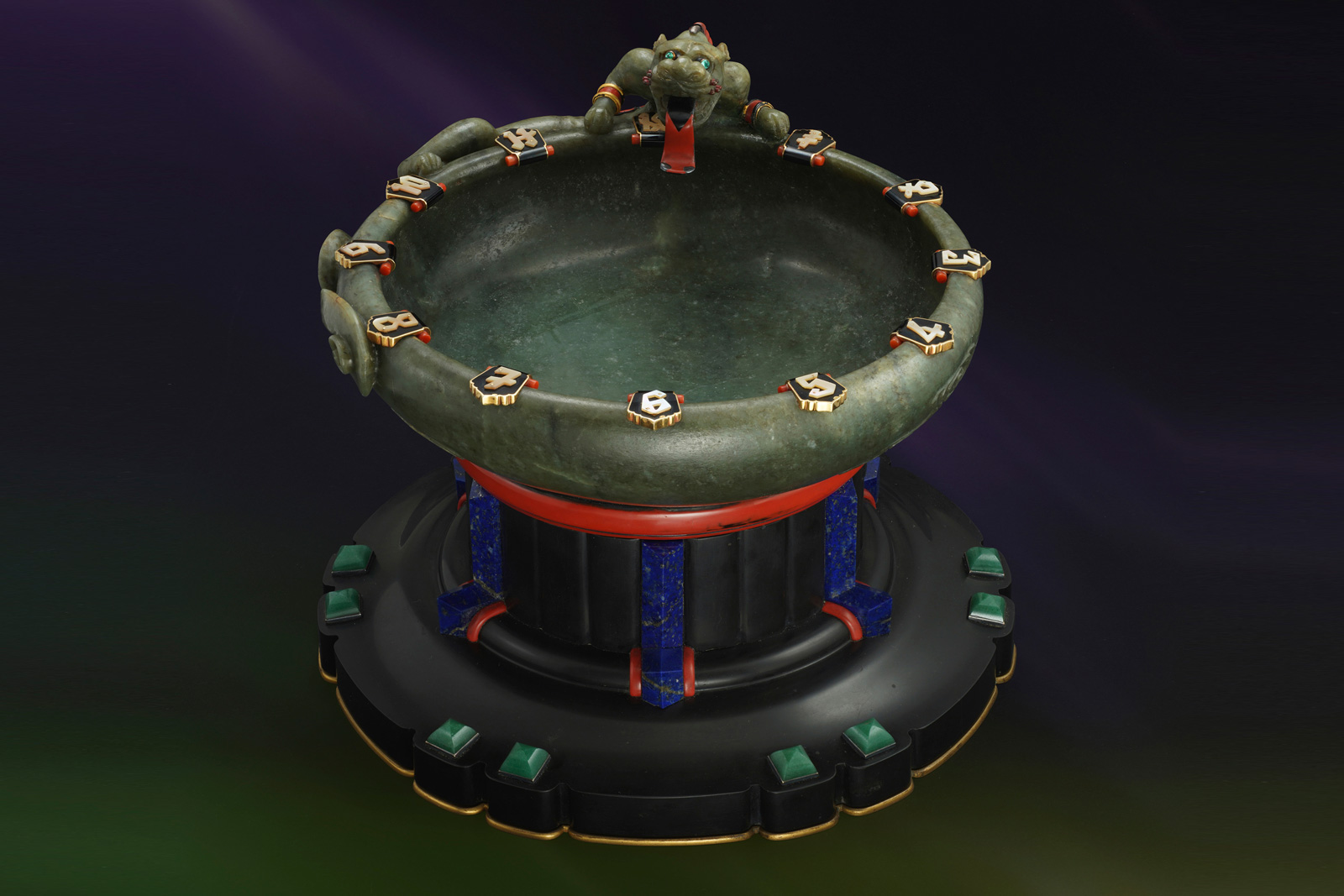
The bowl sits on a large base inlaid with lapis lazuli, coral, and nephrite. Within the base is the key-wound movement made by the European Watch & Clock Co. (EWC), the primary supplier of watch and clock movements to Cartier. It’s a simple yet clever invention that relies on magnets, explaining why it is described as a pendule de table magnétique, literally “magnetic table clock”.
Instead of hands, the going train drives a magnet around the base once an hour, allowing the magnet to pull along the pointer floating in the water-filled basin above. All of Cartier’s water clocks operate on the same principle, but none are as large or fancy as this one.
This clock is delivered with a pair of pointers, a carp and a turtle, both auspicious symbols in Chinese culture and also historically used as pointers in “wet” and “dry” compasses of ancient China.
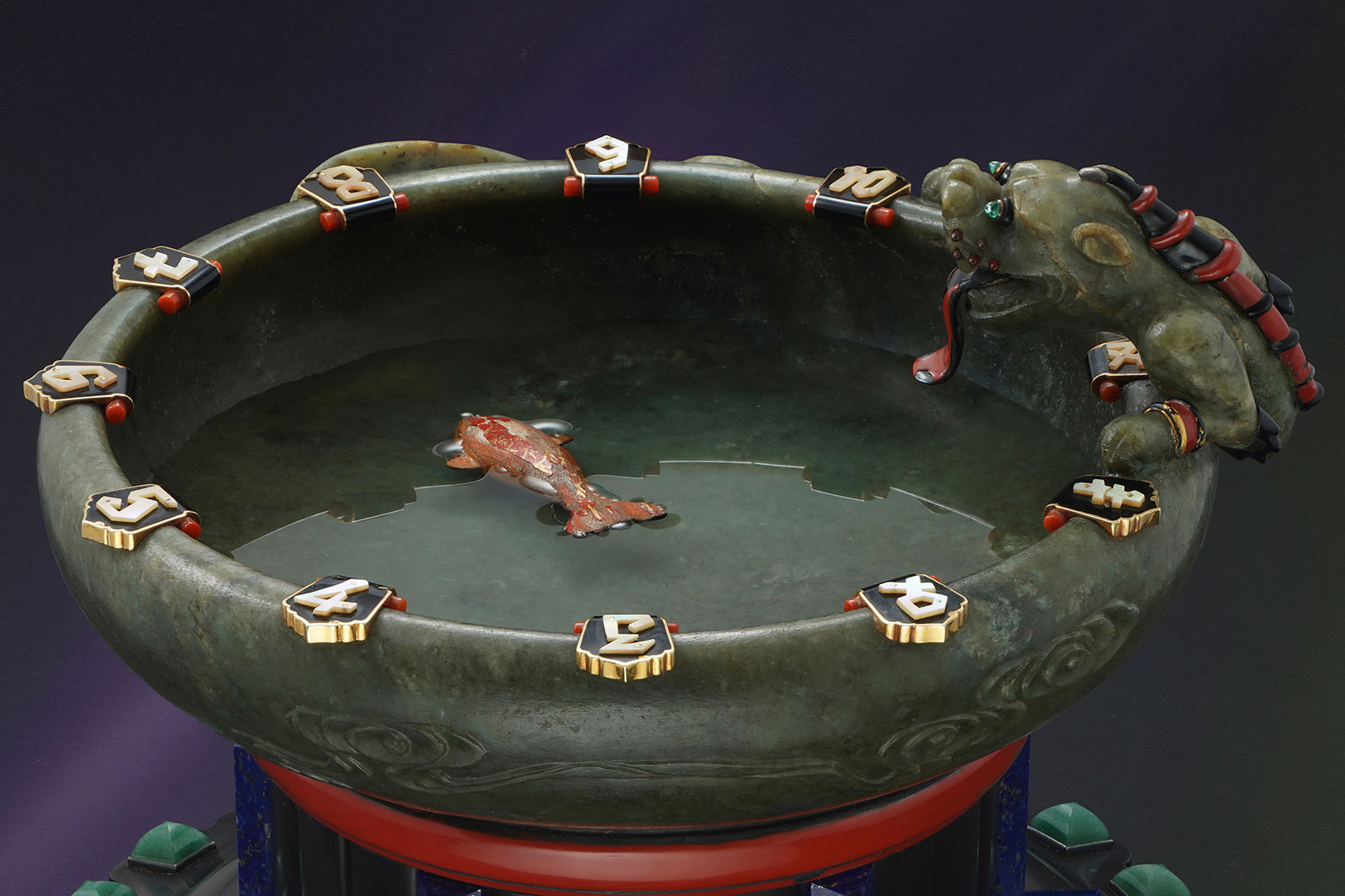
To be sold at Phillips’ Hong Kong auction on May 24, the water clock has an estimate in excess of HK$2 million, or about US$250,000. Considering that a relatively more common Cartier Model A mystery clock sold for over US$877,000 including fees two years ago at Bonhams in Hong Kong, the estimate is a modest one.
Also offered in the same auction is another Cartier clock that similarly reuses an antique Chinese object, this time a double-sided carved jade table screen transformed into a table clock.
Dating from the 18th or 19th century, the jade panel is engraved on both sides with a classical scene depicting mountains, lakes, and pagodas that is modelled on a painting by Qing dynasty court painter Dong Bang Da.
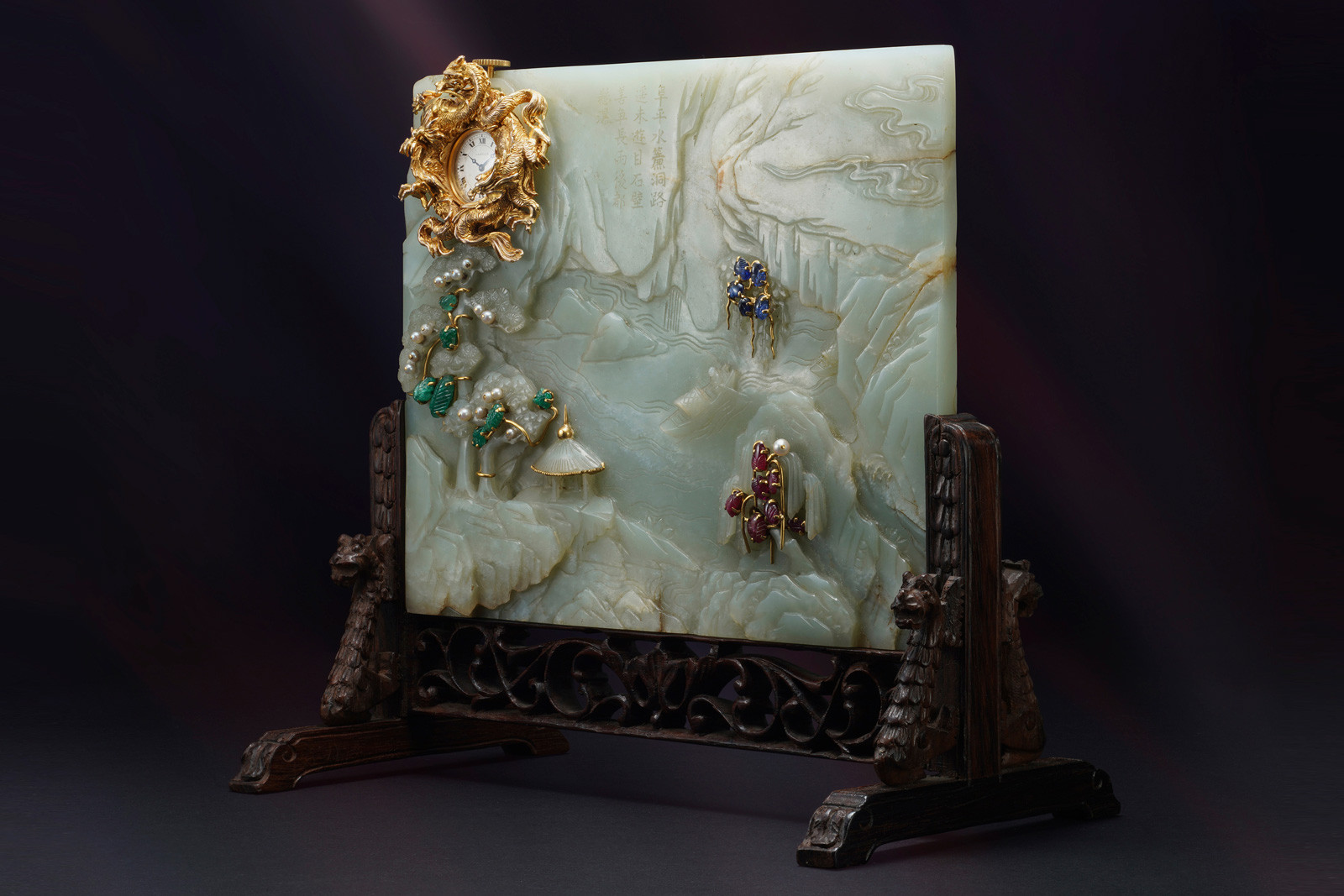
The jewels and clock, however, were added by Cartier, which sold this in 1930. The tiny carved gemstones – sapphires, rubies, and emeralds – along with pearls and gold wire are used to accent the scene on the jade panel. And at the top left corner is a solid gold dragon sculpture that contains an eight-day movement made by EWC and a dial in quintessential Cartier style with Roman numerals, a railway minute track, and Breguet hands.
Last sold at Christie’s in 1990, the jade table screen clock has an estimate in excess of HK$500,000, or about US$65,000.
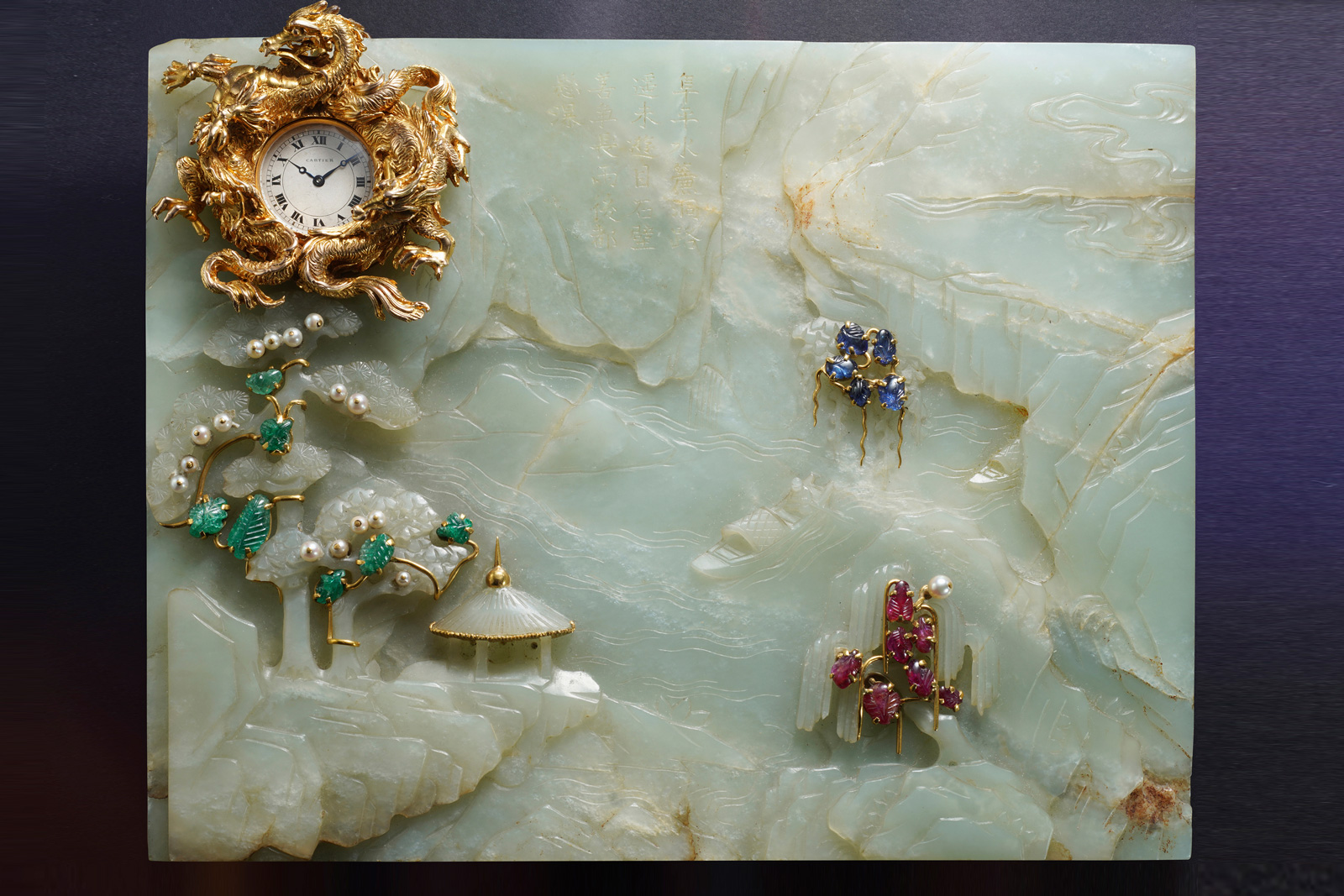
The two other Cartier clocks from this collection will be sold at Phillips’ New York auction taking place on June 8 and 9. The first once again utilises a Chinese antique: a jade bangle that forms the bezel.
Also executed in Art Deco Chinoiserie style, this clock is accented with gold, black enamel, as well as diamonds. Inside is a Longines movement made for a small clock, which is reflected in the Longines archive extract that accompanies the clock. The estimate is US$80,000-160,000.
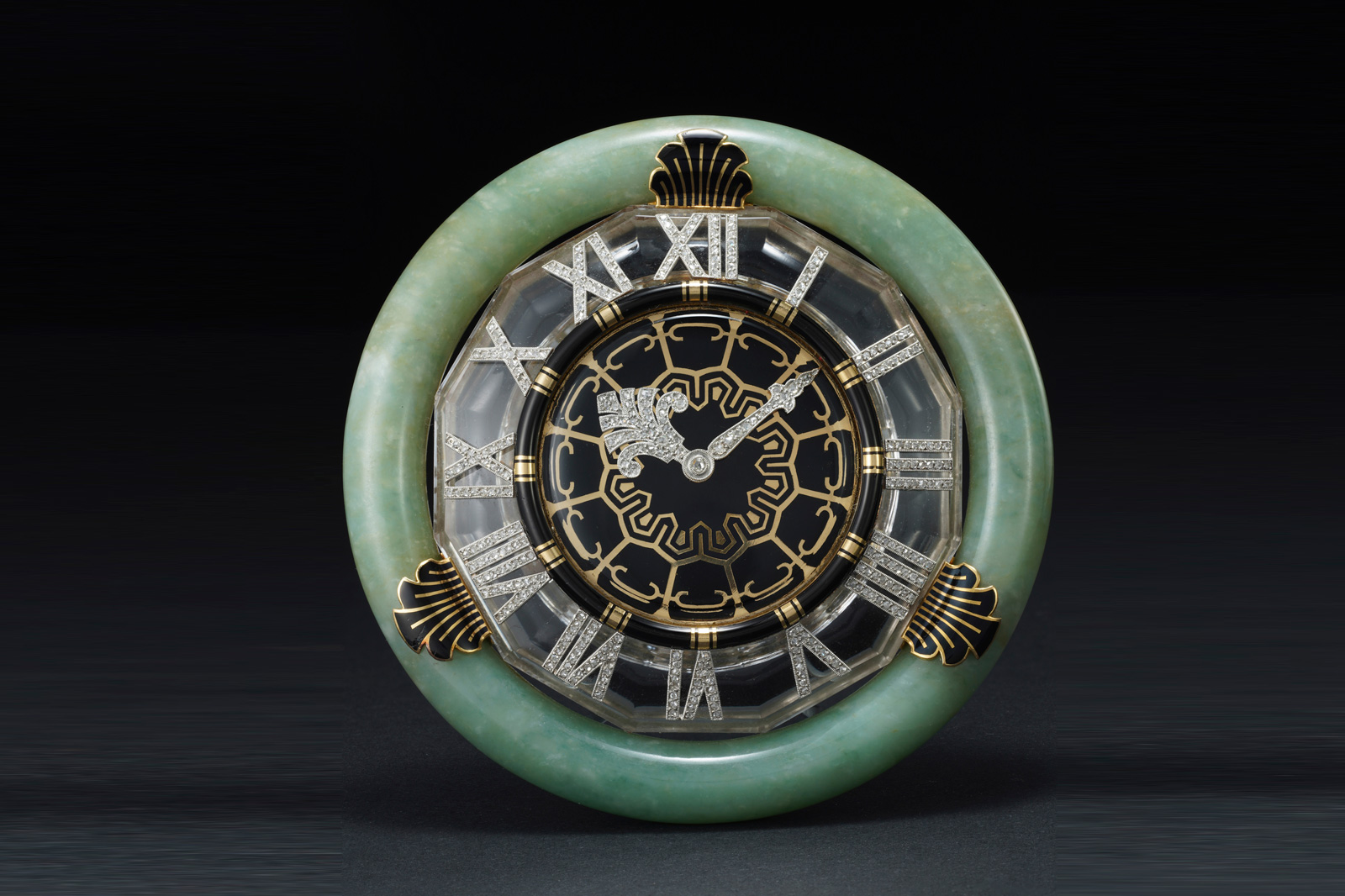
But the masterpiece of the New York sale is undoubtedly the single-axle mystery clock dating to 1926. Perhaps the most famous type of clock ever made by Cartier, the mystery clock was devised by Maurice Coüet, the talented watchmaker who was in charge of the jeweller’s Parisian watchmaking workshop.
He conceived two types of mystery clocks, first the double-axle and then the single-axle, each describing the number of shafts that drive the mysterious display. This is a single-axle example, with the pinion for the time contained within the vertical support for the clock, while the key-wound movement sits inside the flat portion of the base.
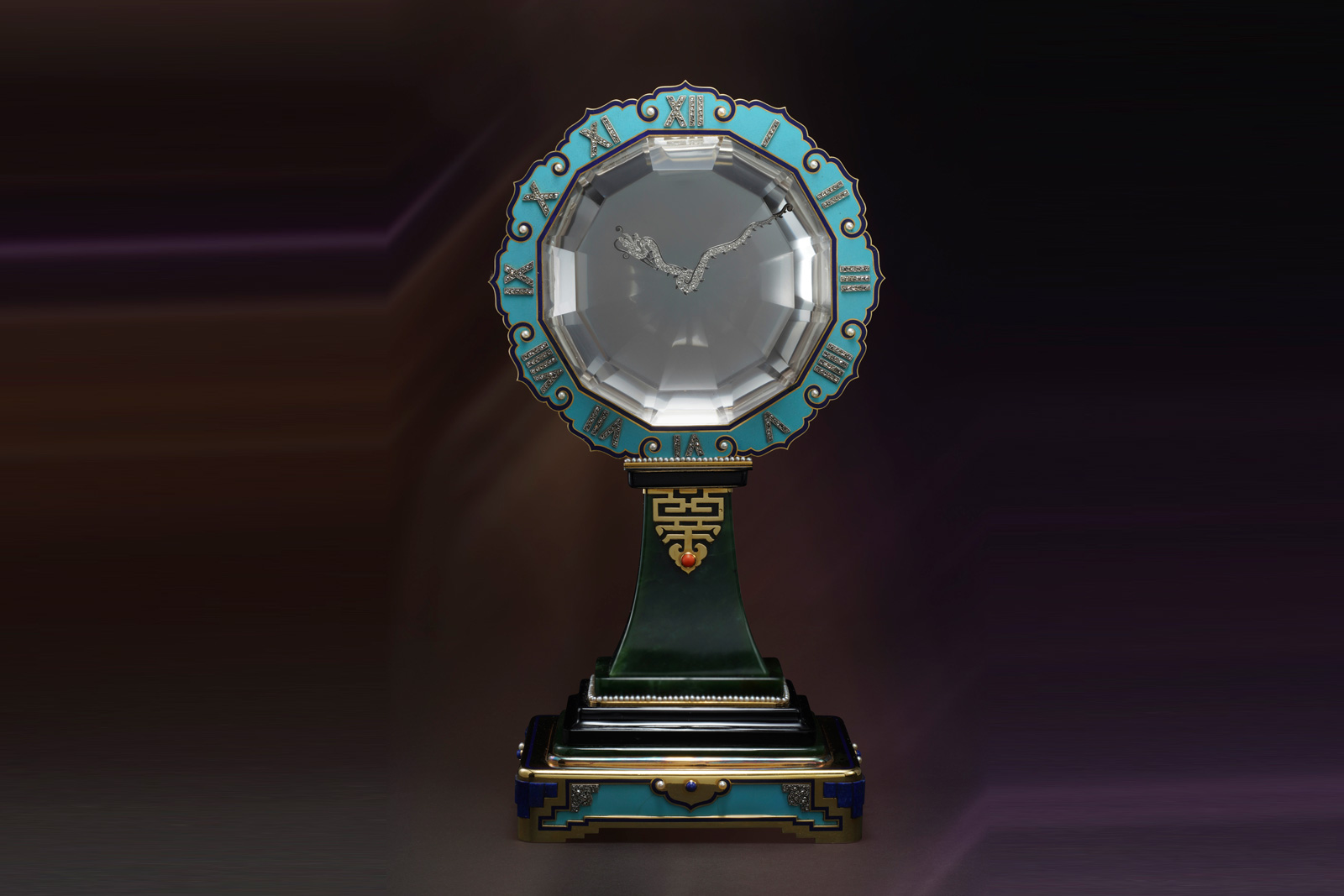
Like many of the mystery clocks of the period, this example is lavishly decorated. The bezel is inlaid in turquoise, enamel, and pearls, with the Roman numerals set with diamonds, as are the hands. The onyx and jade base is similarly decorated with pearls, coral, enamel and turquoise, along with gold accents in an Art Deco Chinoiserie style.
The mystery clock has an estimate of US$300,000-600,000.
For more, visit Phillips.com.
Back to top.

